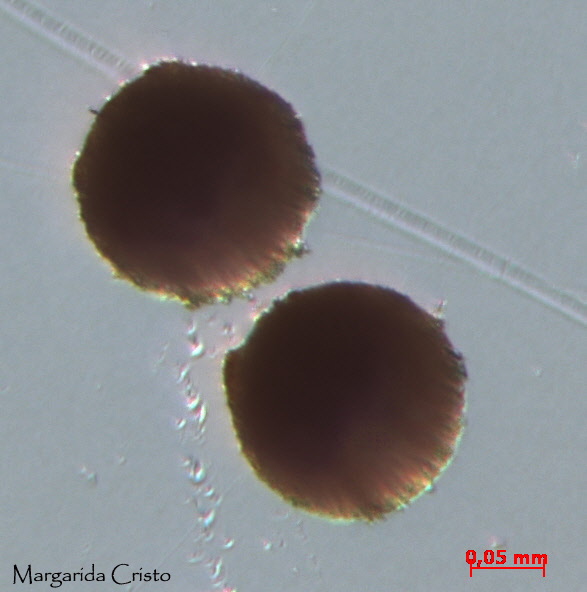Crustaceans - Large Branchiopoda

> Cyzicus grubei
Order: Spinicaudata (“clam-shrimp”)
The order Spinicaudata appeared about 400 million years ago and is distributed almost everywhere except the Antarctic. This order is associated with bodies of fresh and temporary freshwater and often muddy, that is, temporary ponds.
They are organisms that have the body covered by two oval valves and are a little flattened. The following image shows the general morphology of this order of crustaceans and in the case of Mediterranean Temporary Pits are represented by two species: Cyzicus grubei and Maghrebestheria maroccana.
In the case of Cyzicus grubei they are reddish-brown in color with a maximum length of 15 mm and have separate sexes. The body is covered by two oval valves with a brown-reddish colour. The valves have a maximum length of 15mm. They have separate sexes.

 Image of Cyzicus grubei.
Image of Cyzicus grubei.
Photo of Elisabete Rodrigues | Sul Informação
Images fo Cysicus grubei movements - cortesy of Horácio Costa
Lifecycle:
The active stage of the lifecycle takes place throughout the entire wet phase of the biotope, lasting 7-8 months. In the valves we can count their age through growth lines as the following image illustrates:
 In this image it is possible to see the growing rings of Cyzicus grubei (Simon, 1886)
In this image it is possible to see the growing rings of Cyzicus grubei (Simon, 1886)
Feeding:
They are essentially detritivores although they sometimes filter out some algae. In the more muddy waters they can ingest clay particles to take advantage of the organic matter absorve by it.
Reproduction:
Sexual maturity is reached in about 3 months. Fertilization is internal. During copulation, male and female stay ventrally united, the bodies perpendicular to each other. Before releasing them, the female keeps the cysts (eggs resistant to desiccation) in a couple of laminar masses located at the 9th and 10th pair of thoracopods. The number of cysts in each batch is directly related to the size of the female.
 Cysts (eggs) of Cyzicus grubei. Photo of Margarida Cristo
Cysts (eggs) of Cyzicus grubei. Photo of Margarida Cristo
 Juvenil of Cyzicus grubei. Photo of Margarida Cristo
Juvenil of Cyzicus grubei. Photo of Margarida Cristo
Other characteristics:
They spend great part of their time in the bottom. They resist to low concentrations of oxygen.
Freshwater temporary ponds, namely the Mediterranean Temporary Ponds (priority habitat 3170 - Directive 92/43/CEE). They prefer relatively deep ponds, with a long hydroperiod.
It is an Iberian-Balearic endemism, having been found in the watershed of the rivers Douro, Tagus, Guadiana and Guadalquivir, and also in a single region of Minorca Island. In Portugal it was found along the central and oriental zones of the municipality of Beja, and in the farthest southwest and southeast regions of Algarve.
The threats to this species are directly related to the loss and degradation of its habitat. Up to this date it has no legal protection status.


